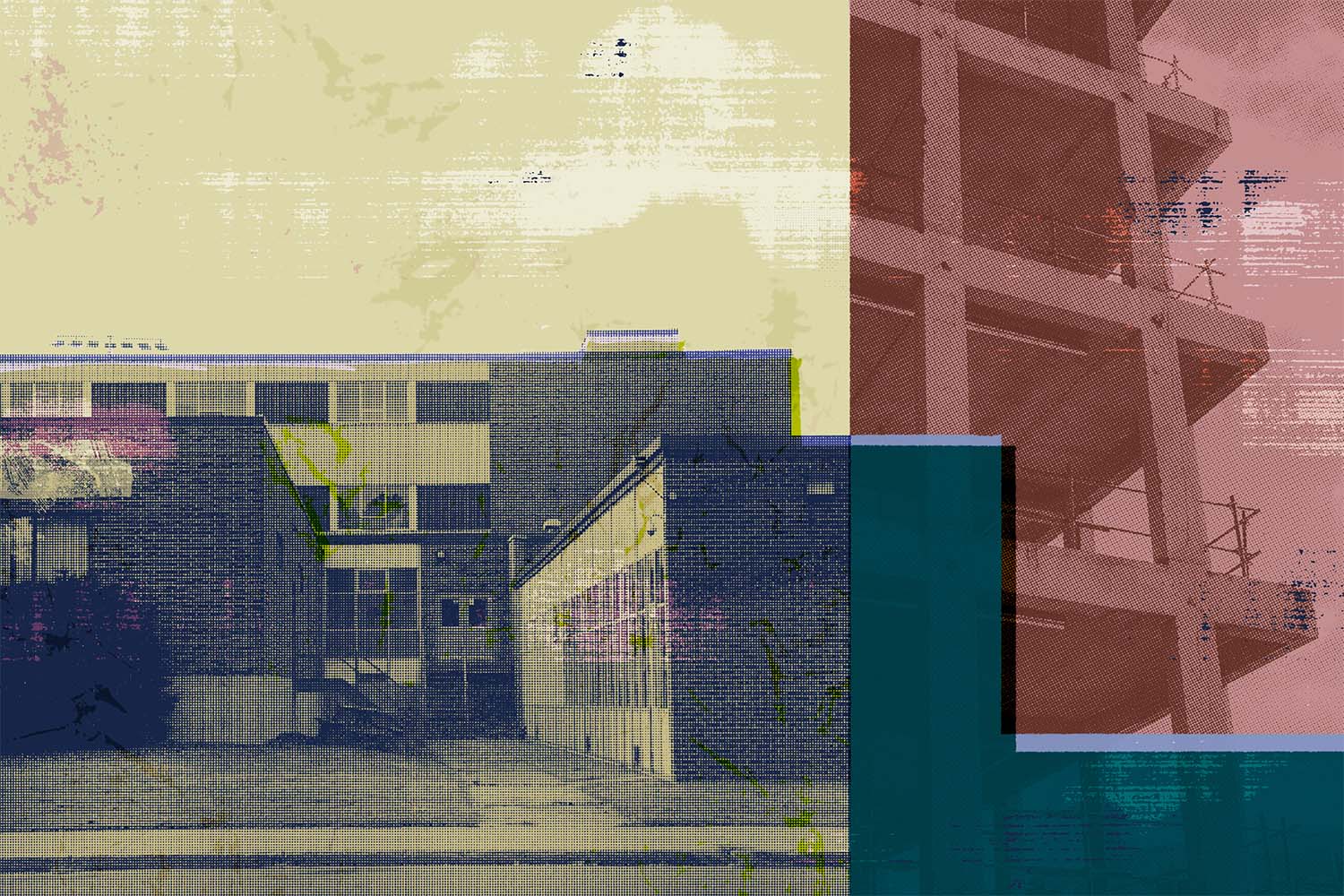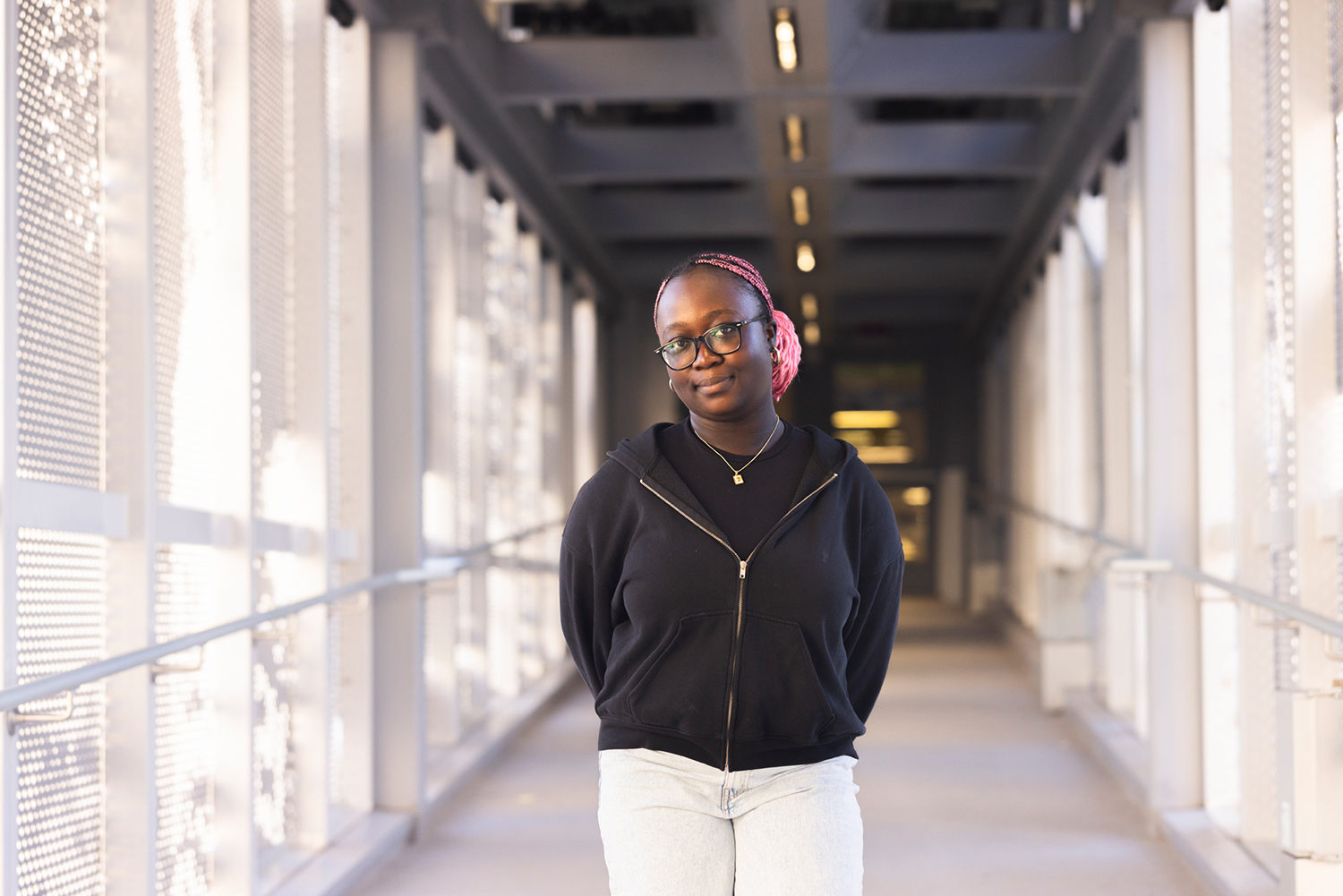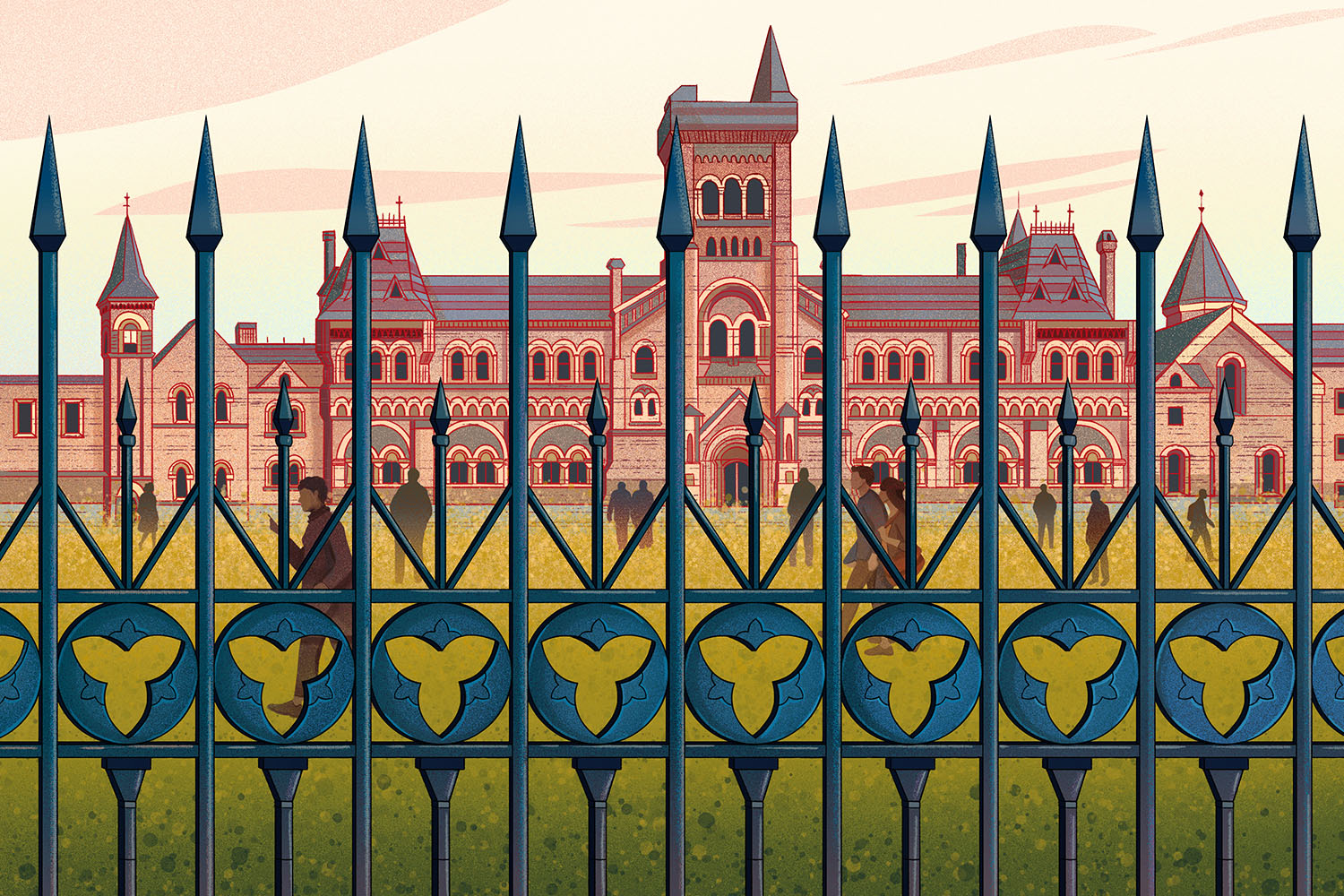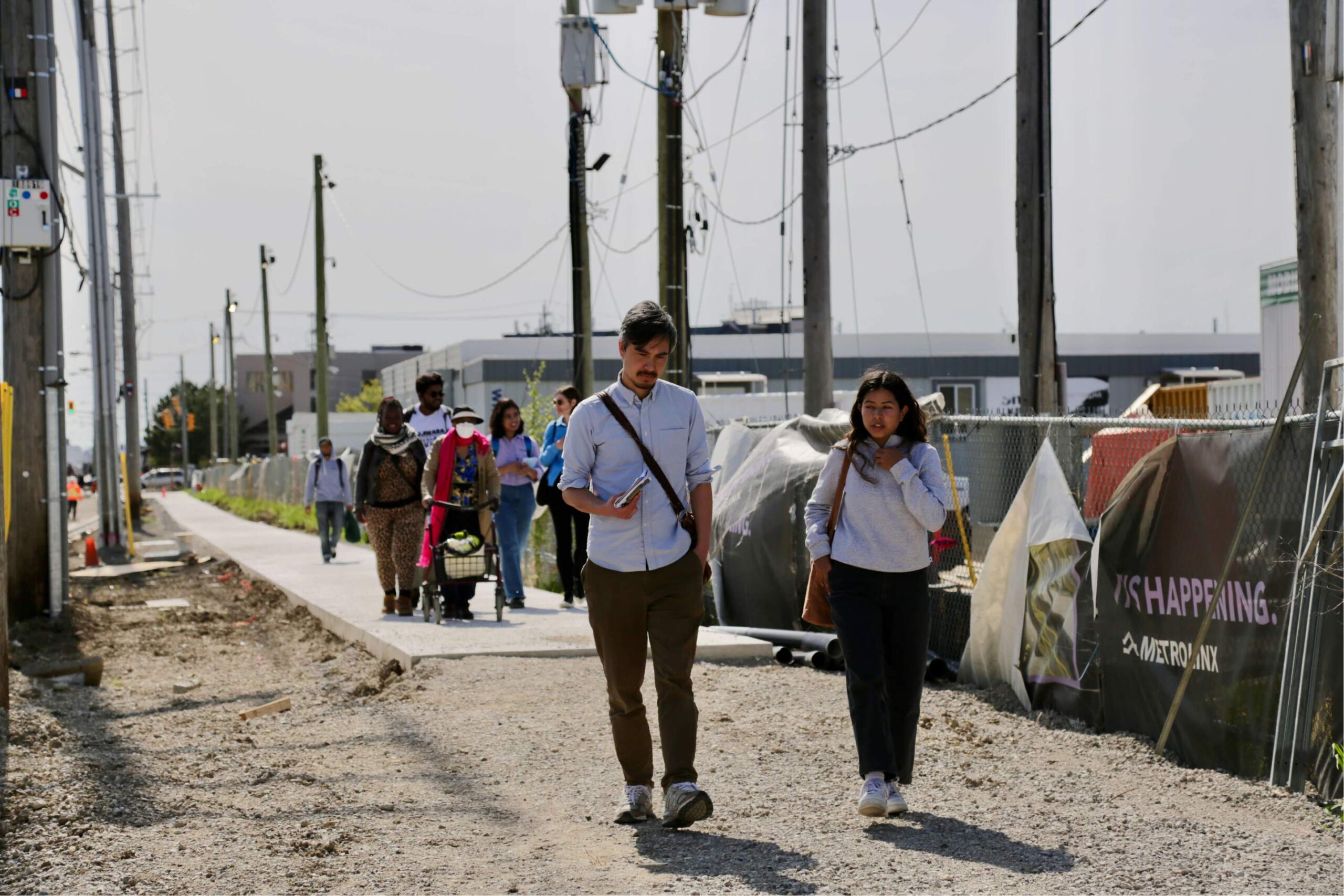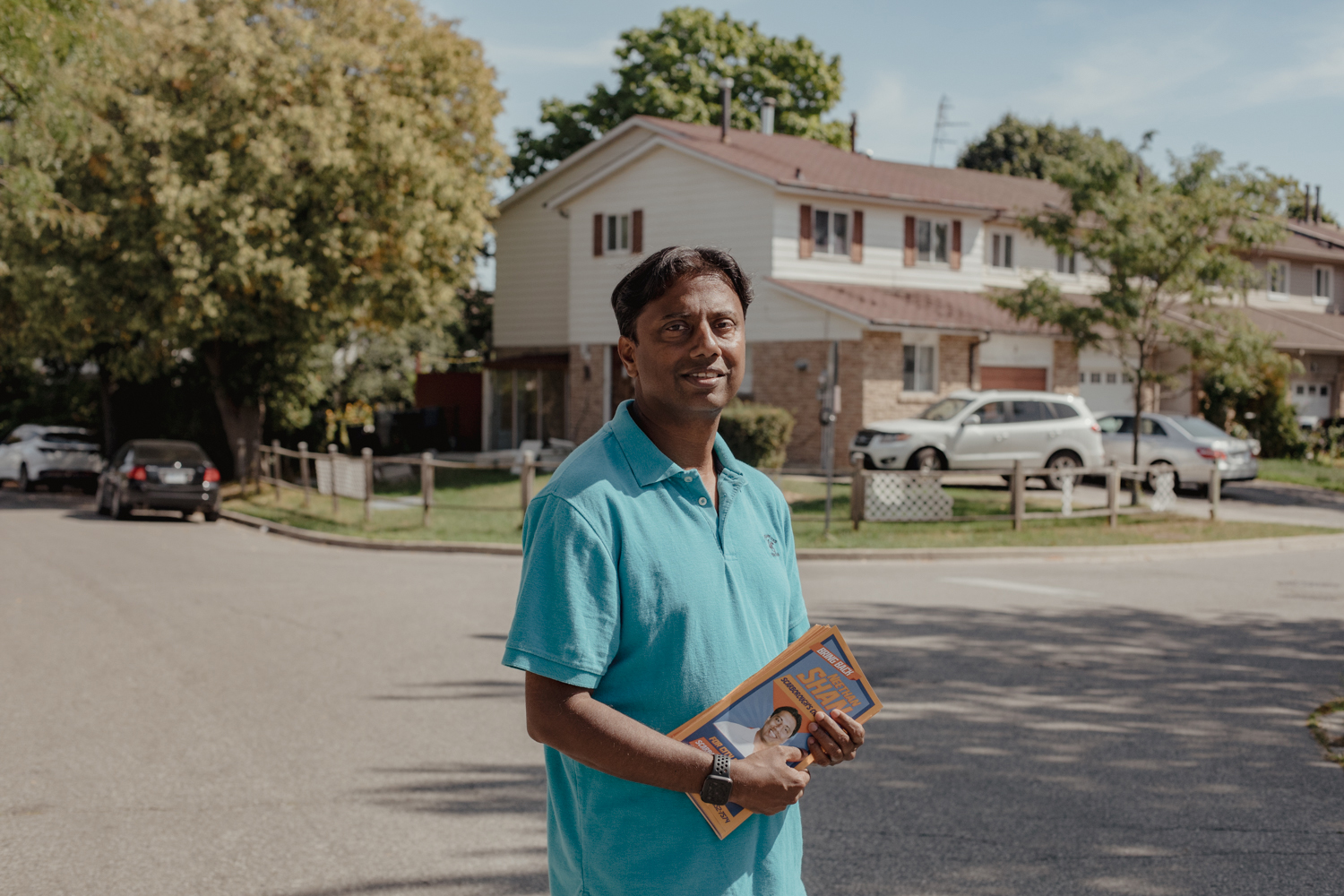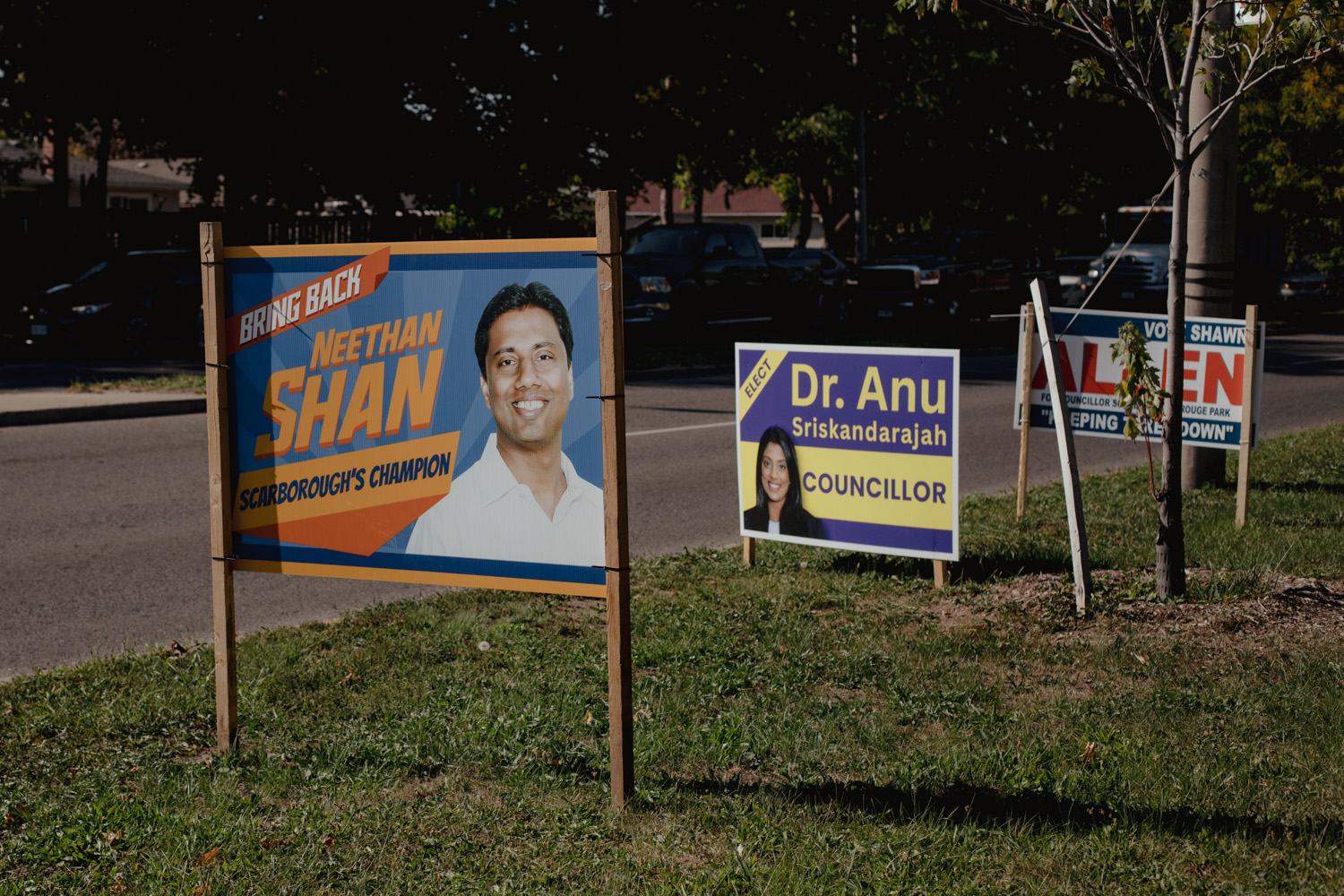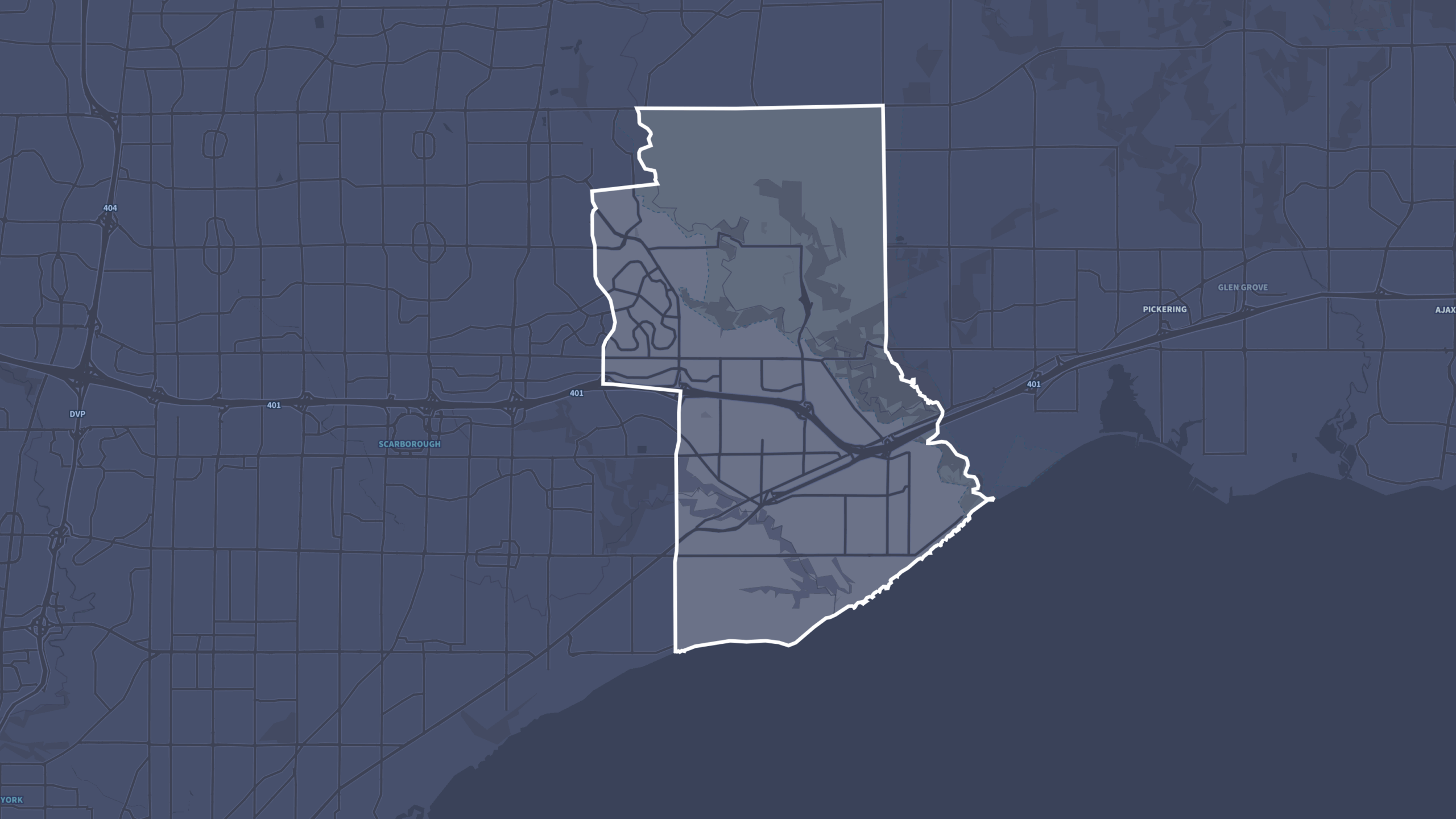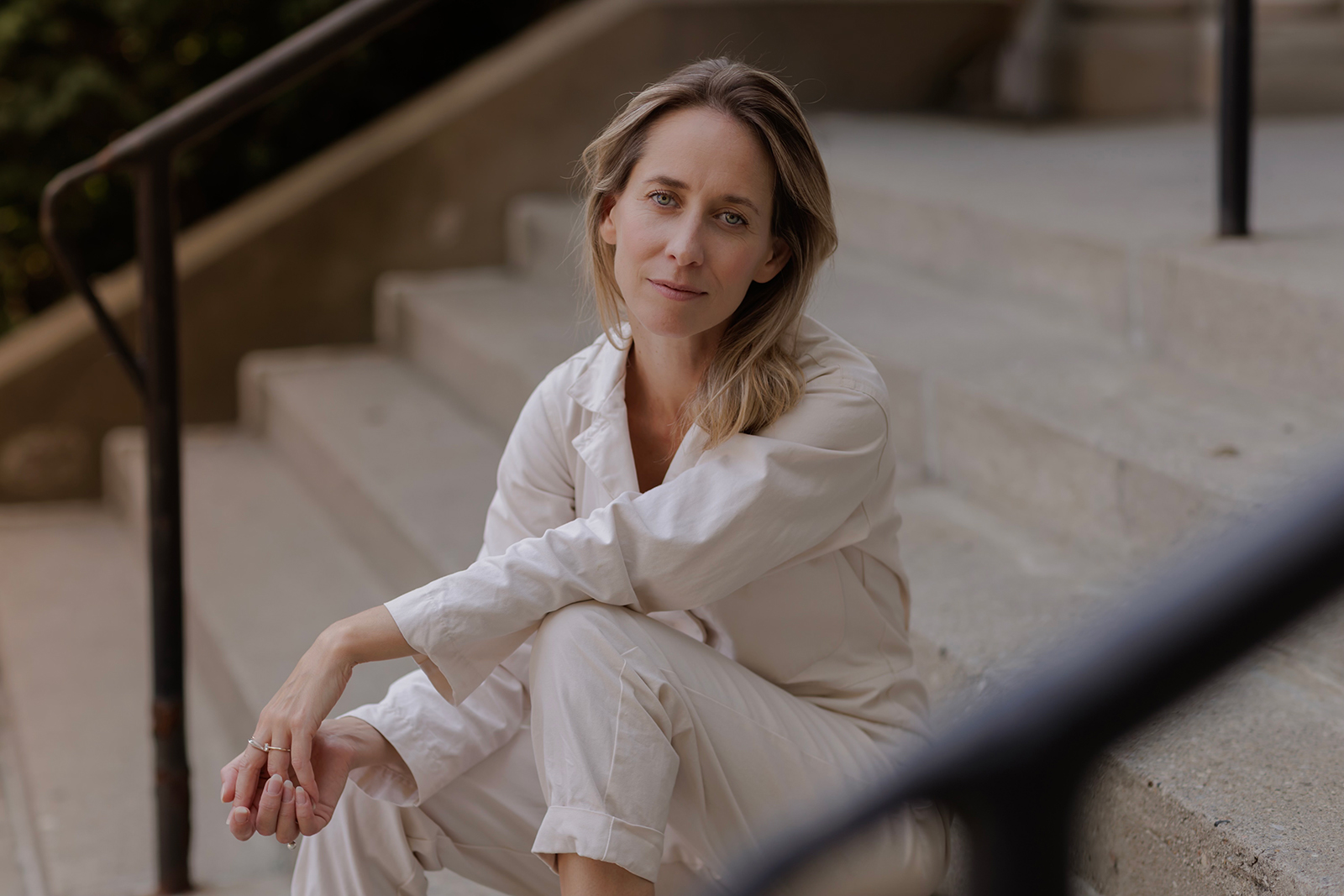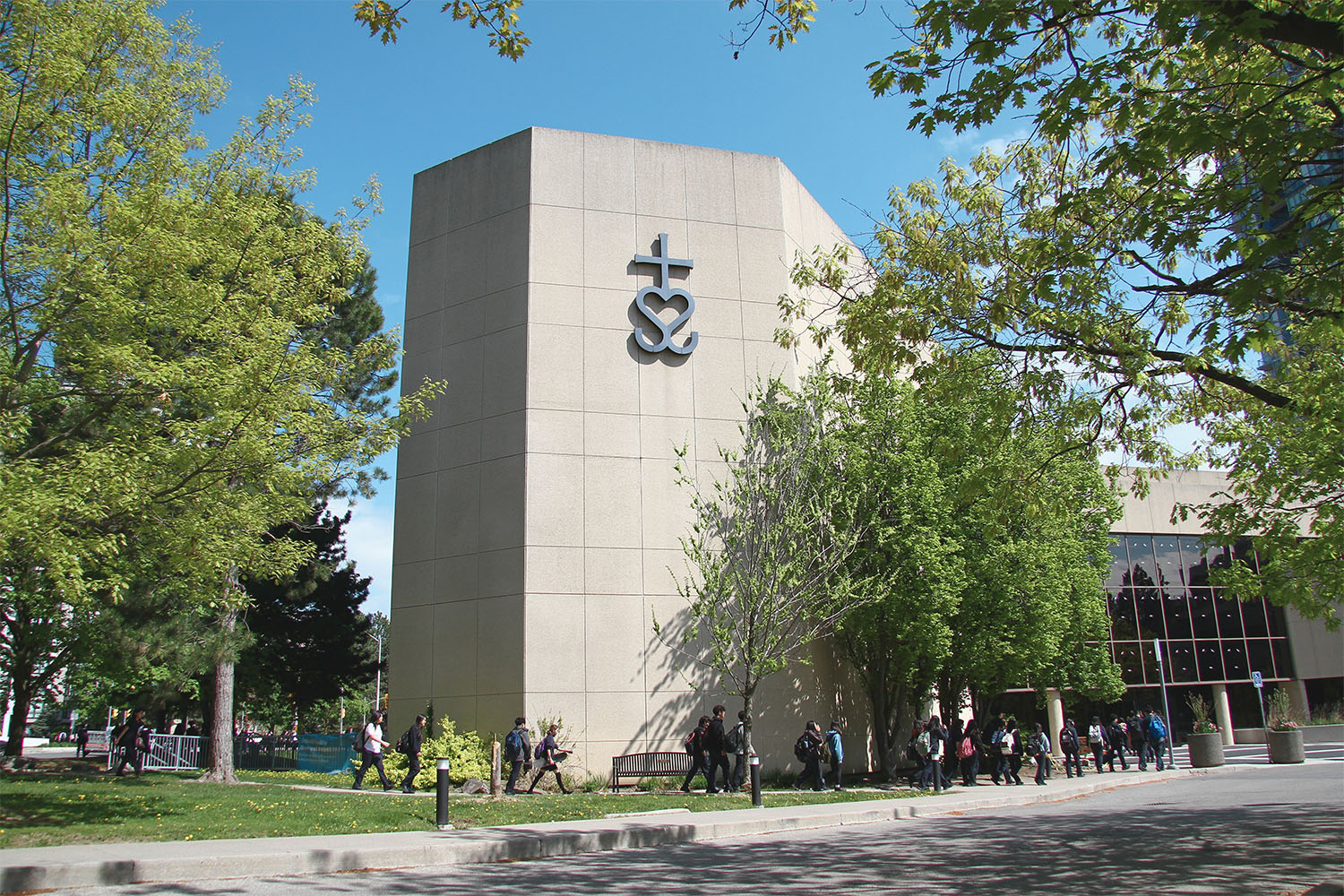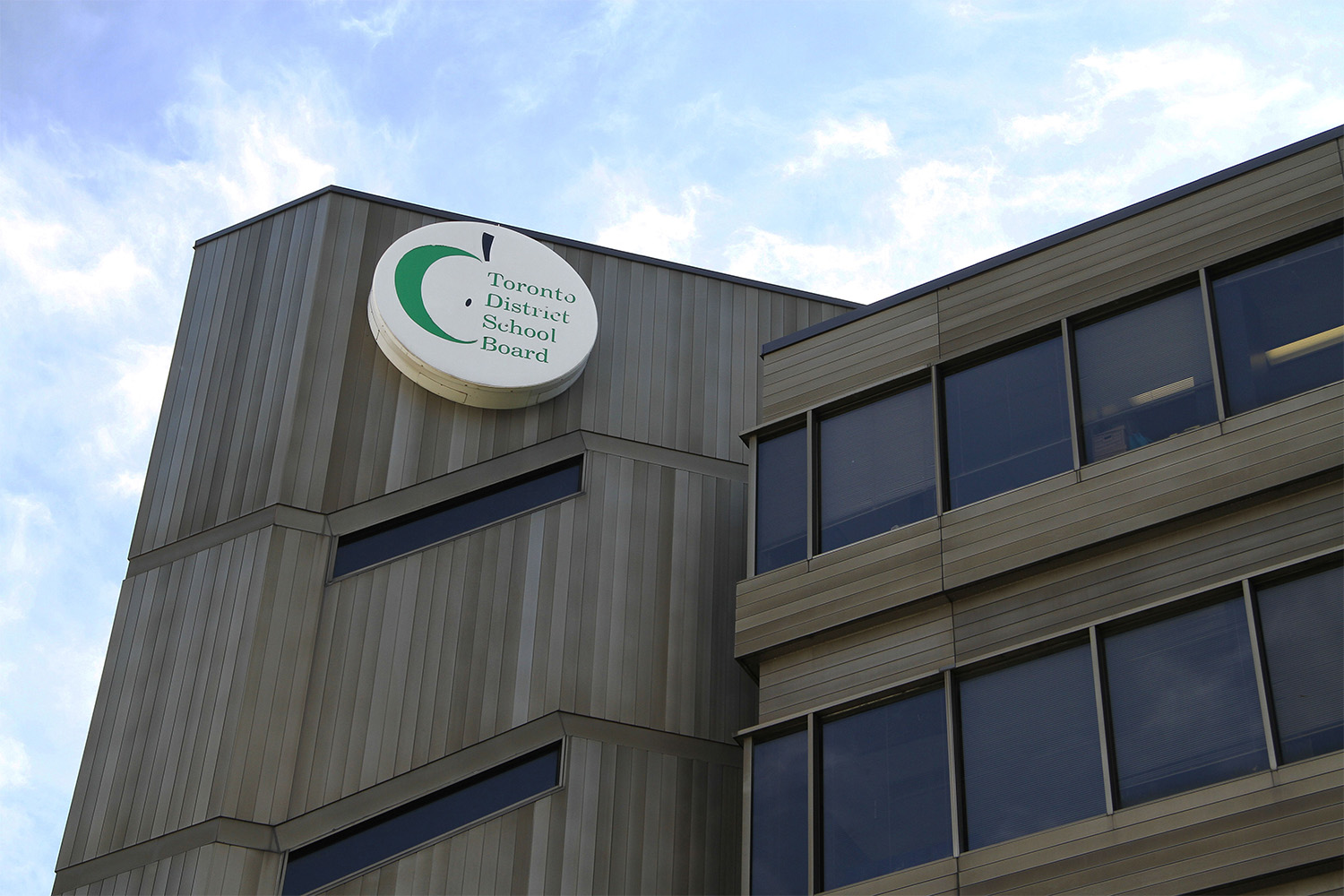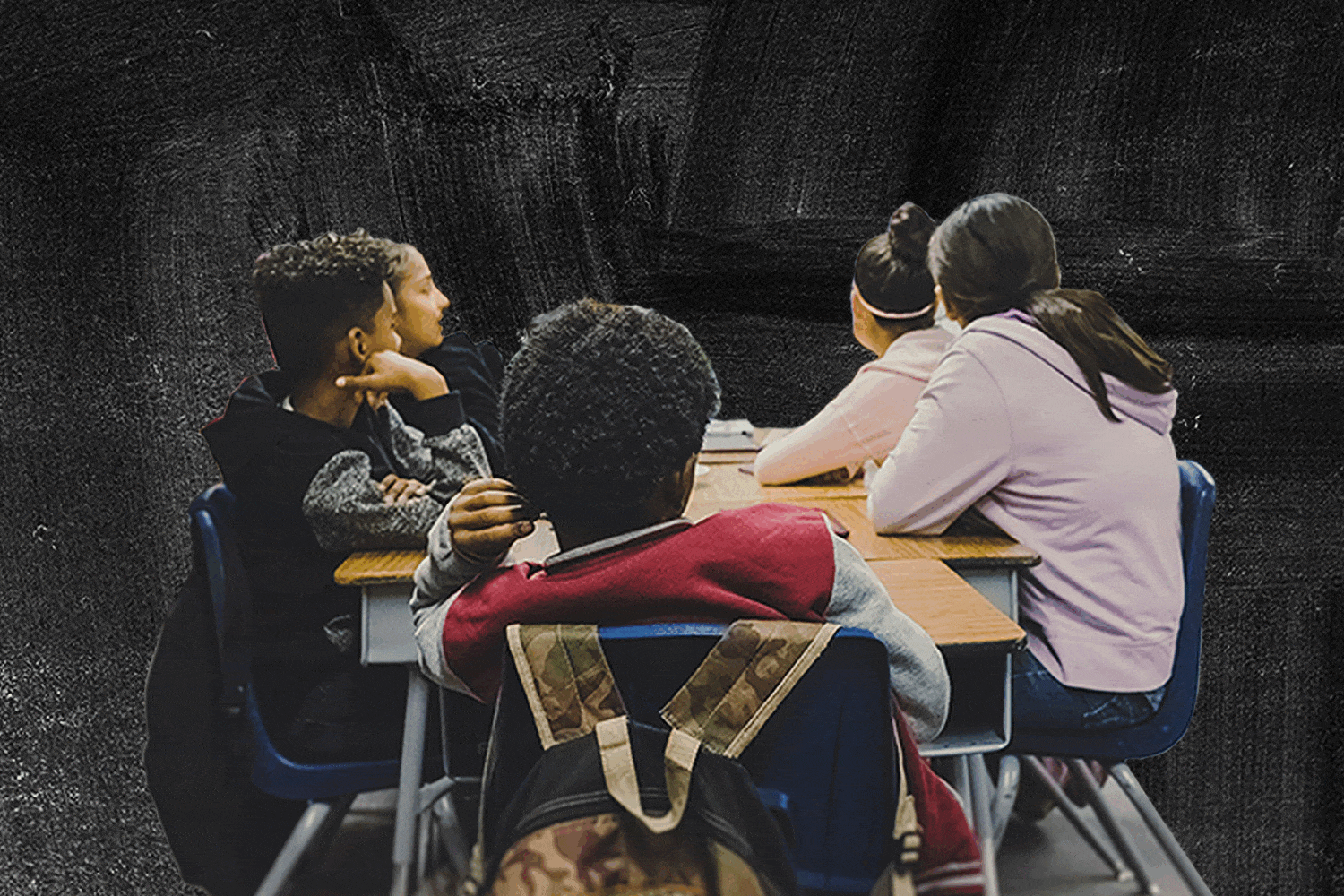
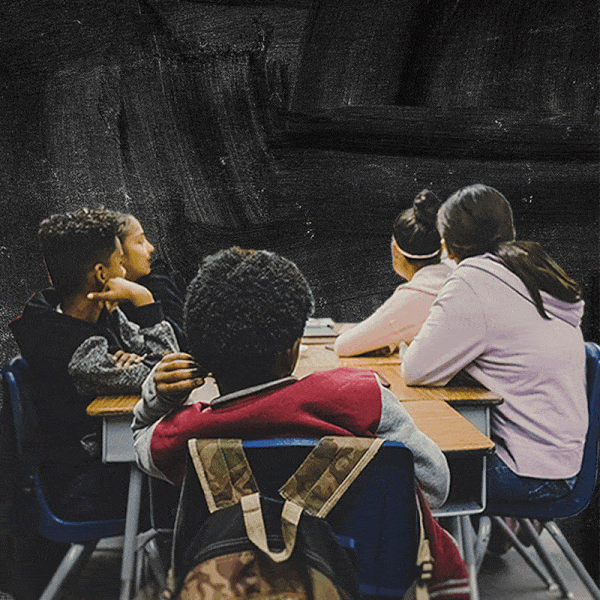
On a Friday in early February 2022, Layla was driving home from work when she got a call from her children’s school. The 42-year-old healthcare worker, whose kids attended a Peel District School Board kindergarten in Mississauga, had been looking forward to it.
Her five-year-old daughter Farah and son Yasir are adopted twins still recovering from trauma they’d faced very early in their young lives. Since the beginning of the 2021-22 school year, they’d been having behavioural challenges at school, and Layla had been told that day’s phone meeting would offer updates on a solution. On the call was the superintendent, a special education coordinator, a social worker, a parent advocate, and a parent liaison.
“I was all excited,” Layla says. In her mind, the meeting promised an end to a gruelling, uncertain gauntlet. Instead, through crackling static, the voice on the phone said, “I’m just calling to let you know that both your children are going to be excluded.”
Exclusions are such a little-known phenomenon in the Ontario education system that when she’d first heard the terms months prior, Layla hadn’t known what it meant. (Layla is my second cousin, and although I have never met her twins, I first heard of school exclusions through her. She, her spouse, and her children have been given pseudonyms to protect their privacy.) Effective Monday, the voice on the phone told her, the five-year-olds would not be allowed to enter their school building. This was the second exclusion for Layla’s daughter, who’d first been barred from school in November. The following month—more than halfway through the school year—the twins would be transferred to a new school, which Layla had three days to choose from the two options given to her.
Layla began to sob, so audibly that the parent advocate on the call, concerned for her safety, instructed her to pull over. “I was blindsided,” she says. Five months of attempted interventions, of cutting back the time the kids spent at school, were ending in the children being abruptly severed from their school environment.
Hours later, Layla and her husband Jalal were emailed a formal exclusion letter. Beneath a header bearing the school’s cartoon mascot, the text laid out the next steps. “We are supportive of and will be implementing a student administrative transfer for [Farah and Yasir] to another school,” it read. “It is clear that [Farah and Yasir] are not coping well and that [the school] cannot accommodate the physical space, level of support and the treatment the twins require to thrive.” The exclusion would begin in two days. To Layla, it felt like the school was washing their hands of her five-year-olds.
Join the thousands of Torontonians who've signed up for our free newsletter and get award-winning local journalism delivered to your inbox.
"*" indicates required fields
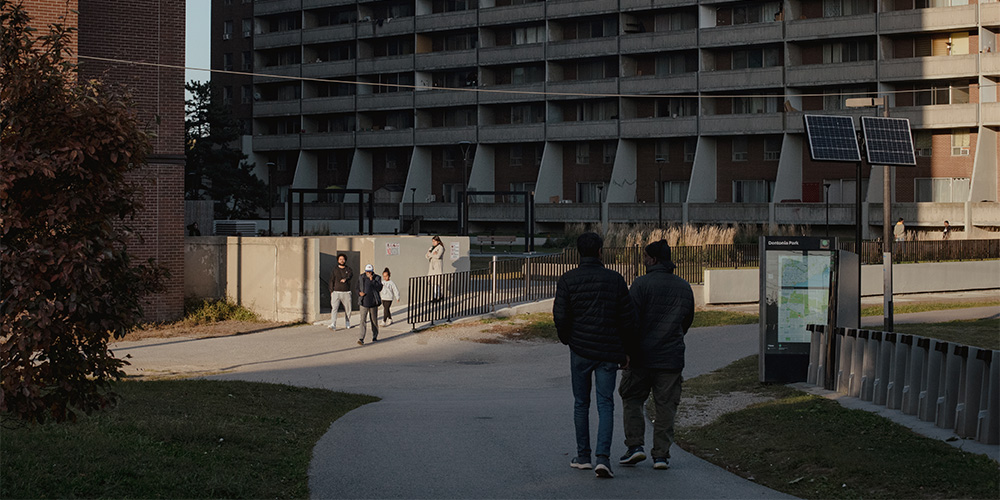
The power to exclude students from school indefinitely, at a principal’s total discretion, comes from a little-known provision of Ontario’s Education Act, Section 265 (1)(m). It offers principals a broad, unspecified authority to bar “detrimental” individuals from the school or classroom. There’s no limit on how long a student can be excluded, and no stipulated requirement for schools to provide alternative support. (In Layla’s case, the PDSB had offered to cover child care costs for the period of exclusion.)
This sweeping power is encapsulated in just a few sentences: “It is the duty of a principal of a school, in addition to the principal’s duties as a teacher…subject to an appeal to the board, to refuse to admit to the school or classroom a person whose presence in the school or classroom would in the principal’s judgment be detrimental to the physical or mental well-being of the pupils.”
A student who is excluded under the provision is granted none of the contingencies or reprieves that accompany a suspension or expulsion. If a student in Ontario is suspended or expelled, they can find a clear roadmap for what should happen next: the process, from an appeal to an action plan to a hearing, is laid out in the Education Act. School boards are mandated to offer educational programs for both suspended and expelled students, and a student who is expelled must also be offered non-academic support, like counselling. If a student is suspended, the discipline is time-limited, and if they’re expelled, it’s the school’s duty to help find them an alternative plan.
Ilinca Stefan, a staff lawyer at ARCH Disability Law Centre, can quickly rattle off a list of extenuating factors that a principal is obligated to consider before suspending or expelling a student: whether the behaviour leading to the suspension or expulsion was disability-related; whether the student can control it; whether suspending or expelling the student will make the behaviour worse; if the student has a safety plan. “It’s actually written in the law,” she says.
“None of that is mandated when a student is excluded under 265 (1) (m),” says Stefan. “There aren’t procedural protections in the same way that there are for suspensions or expulsions.” Without guidelines from the provincial government, school boards across the province are given leeway to exclude students as they see fit. And with unrelenting cuts to education funding, particularly to special education, advocates worry that underfunded, understaffed schools are using the exclusion process as a loophole to send home the students they don’t have the resources to teach.
Although the act says that an exclusion can be appealed, it does not outline what that appeal must look like, or how long it should take. Depending on the school board, “they can kind of make up their own procedure, and make up what the appeal looks like,” says Stefan.
Legally, this means schools can exclude students indefinitely, Stefan adds. Time and time again, ARCH says they see the exclusion provision being abused, particularly to push out students with disabilities the school is struggling to accommodate. They’ve seen students with disabilities excluded from school for months, even stretching up to a year. And anecdotally, they’ve seen the phenomenon disproportionately affect racialized students, who Stefan says are excluded “more often, and for a longer duration.”
“On top of that, there’s no requirement to keep track of how often this happens or to report any data about exclusion. It’s almost this hidden secret.”
Trying to obtain information on exclusions in Ontario is like pulling teeth. The Local filed Freedom of Information requests with the Ministry of Education asking for five years of education data. We only received two years’ worth, 2020-21 and 2021-22—before these years, the Ministry was not compiling exclusion data at all. The Ministry has yet to provide The Local with data for 2022-23. Meanwhile, every school board across the province gets to make its own choices about whether to exclude students, what process to use, and whether to collect any data.
The only provincial data available comes from the pandemic period, making it harder to see the whole picture. But even with the sparse data on hand, grim truths become clear. 150 exclusions took place across Ontario in 2020-21, with those students collectively excluded for 5,695 days—that’s more than 15 years. In 2021-22, 374 students were excluded for a total of 7,700 days. Some were excluded more than once a year.
Perhaps most troubling is the fact that more than half of the exclusions in both years were directed at students receiving some form of special education.
The Local also filed municipal FOIs with 12 individual school boards in the GTA, with varying results. School boards in Durham and York, as well as the Halton Catholic board, reported no instances of exclusions. Of the remaining boards, only Peel and Halton districts and the Toronto Catholic School Board had data available for every year from 2017 to 2023. They averaged between 25 and 50 exclusions per year.
The information we received also showed the limitations of the Ministry of Education’s data collection: the province has failed to disclose the total number of exclusions per school board, and what little information they have provided contains discrepancies. For instance, in the Ministry’s 2020-21 data, the Peel District School Board is listed as having no exclusions—but the PDSB told The Local it had 11. (The PDSB did not address the discrepancy when reached for comment.) It’s difficult to determine how many other school boards might have discrepancies, including the dozens of school boards from which The Local did not individually request exclusion data. The Ministry also doesn’t collect race-based data.
The double exclusion was the culmination of a nightmarish first year of school for Layla’s twins, Farah and Yasir. The family had recently moved to a new area of the Peel District School Board. They had heard that this part of Mississauga had the best schools, and she hoped that her twins would have a smooth start to kindergarten there.
The five-year-old twins were adopted internationally, and the trauma they experienced early in their lives created unique challenges during a transition that’s already difficult for any kindergartener. In daycare, they had no significant issues. But within days of the start of kindergarten, Layla and her husband started receiving calls from the principal about incidents with their children: hitting, biting, running out of the classroom. On the phone with the principal, she immediately tried to explain the circumstances around her children’s recent arrival to Canada. “This is all just going to take a little bit of time,” she recalls telling him.
Instead, that very first week of school, Layla alleges that the principal asked her to begin picking up the twins mid-day. This wasn’t possible, because she worked. In response, she says, he recommended she put them in daycare. Desperate and confused, the family called the daycare, who told them that the school was meant to have the resources to support their children.
In a written response to The Local, the Peel District School Board declined to respond to Layla’s allegations, citing confidentiality requirements. “As a Board, we have a deep commitment to keeping students in school,” it said. “In the rare circumstances where exclusions have happened, they occurred when student safety, self and others [sic], was unable to be maintained in the learning environment despite significant accommodations and support…Decisions are not made lightly but rather through careful, critical consideration by a multidisciplinary team.”
It was like ping-pong: the school would tell them their children had issues that the institution was unequipped to handle, and Layla and Jalal would search desperately for options elsewhere, only to be told it was the school’s job. From there, things only escalated, Layla claims: she began getting repeated calls telling her to pick her kids up from school because they were dysregulated, and the teacher couldn’t calm them down. The school facilitated needs assessments for the children, but also consistently pushed to send them home early.
Time and time again, ARCH says they see the exclusion provision being abused, particularly to push out students with disabilities the school is struggling to accommodate.
Worn out, Layla spent these months constantly on the verge of tears. Her husband Jalal grew fearful for her health.
In November, Layla came in for a morning meeting with the principal and the special education team. She had been picking her children up in accordance with the reduced hours, taking time off of work and rearranging childcare and meetings to accommodate. She was hopeful that a long-term plan was in sight. Instead, she says, the school told her that their social and emotional coordinator recommended that Farah only attend school for 30 minutes going forward. Layla was stunned.“It’s winter, it’s going to take her 15 minutes to take off her boots and jacket. And then what? You’re going to tell her, ‘put everything back on because your mom is coming?’”
Layla begged them to let her kids stay for the rest of the day, too distraught to think straight. The next day, she told the principal that unless he put it in writing that her child could only come in for 30 minutes, and identified how the lack of education and supervision for the remaining hours would be covered, Farah would be in school on Monday.
That weekend, Layla received Farah’s first exclusion notice. Effective Monday, her daughter would not be allowed to enter the school. “The exclusion…is neither disciplinary nor is it limited in duration. It is deemed necessary at the present time in order to provide an opportunity for further assessment,” it read. The letter stated that the exclusion was due to Farah’s “self-injurious behaviour and behaviour that is injurious to other students.” From the school’s perspective, it was an impossible situation: every day, the five-year-old was behaving in ways that endangered her well-being and that of the other children in her class, and the one-on-one support they’d implemented hadn’t led to any improvements.
With Farah excluded from school, things devolved into chaos. “I had to cancel shifts. My husband had to cancel meetings.” They even had to ask their older son, who is 13 years old, to stay home for a few days with his aunt to watch his sister.
Layla saw some improvement after emailing the Board of Trustees. A meeting was scheduled on Dec. 16 with 12 representatives from the school. Layla was promised an individualized education plan for her daughter, and later for her son.
But the school’s stance—that the resources devoted to the children weren’t working—persisted. On Feb. 3, only weeks into some of the newest supports offered to the twins, Layla got the call informing her that her children were no longer welcome at school.
“We understand that an exclusion is difficult on families,” the PDSB said in its statement to The Local. “Recognizing the challenges faced by parents without childcare resources during work hours, we remain responsive to family needs…The school and board will do what we can to support the family, and most importantly, the transition back into school.”
Exclusions create a mystifying limbo. Theoretically, they are not intended to be disciplinary, but for students and families on the receiving end, that rings hollow. This is especially true for students with disabilities, who are vastly overrepresented in cases of exclusion.
When Steve Legault first received an exclusion notice for his son Elliot, he and his wife Carrie had no roadmap for how to proceed. Elliot, 17, is autistic and non-verbal, and needs direct support from teachers and educational assistants in the classroom. His responses to sensory triggers in the classroom can be unpredictable.
Prior to receiving an official exclusion, the Ottawa family says they regularly experienced “hints” that the school wanted Elliot out of the classroom. “They were always suggesting that there should be less hours in the day. Like, maybe he’s tired this afternoon. Or maybe you’d be better off if you went home at 1:00,” Legault says.
In the autism community, he adds, this is referred to as a partial or “soft” exclusion: a formal or informal method of sending a child home from school, without documentation. Then, in April 2022, after an incident in which Elliot pulled a classmate by the hair, the family received a letter that he was formally excluded from school. They had never heard of Section 265 (1)(m). Now, it was drastically altering their lives.
“What we’re really seeing happening is that schools are managing their staffing levels by sending children with disabilities home”
“It’s almost like the school principal would have otherwise suspended or expelled a student,” says ARCH Disability Law Centre’s Ilinca Stefan. But suspensions and expulsions come with specific legal obligations. “They can’t legally expel or suspend a student essentially for having a disability, because that’s discriminatory. So, this other option is available to them.”
To Stefan, this is tantamount to a human rights violation. “The law is very clear that education service providers need to accommodate students with disabilities to the point of undue hardship.”
When the Legaults appealed the exclusion, their central argument was the idea that Elliot’s disability wasn’t being accommodated. Still, the exclusion was upheld by school trustees, with profound impacts on the Legault family, forcing Steve and Carrie to cut back at work and compromising Elliot’s eligibility for respite care from the province.
The Legaults say it took complex inter-institutional negotiations for Elliot to be allowed to return to school full-time. They say they took approaches that other families might not have attempted or known about; they created an arrangement with CHEO, formerly the Children’s Hospital of Eastern Ontario, to provide behavioural therapy in-school, forgoing the hours they would have received at home. Had they not done this, Steve believes Elliot would have been “kept partially excluded indefinitely.”
In the aftermath of their experience, the Legaults are grappling with a lack of confidence in an institution that holds immense power in shaping their lives. They worry that Elliot could be excluded again “at any moment,” particularly now that there’s a precedent. “The law is so vague,” says Legault, noting it leaves the fate of kids like Elliot to the discretion of individual school administrators. The Ottawa-Carleton District School Board declined to comment on the details of their exclusion policy.
More about education in Toronto
From budget cuts to school fires, check out our other stories about education in Toronto.
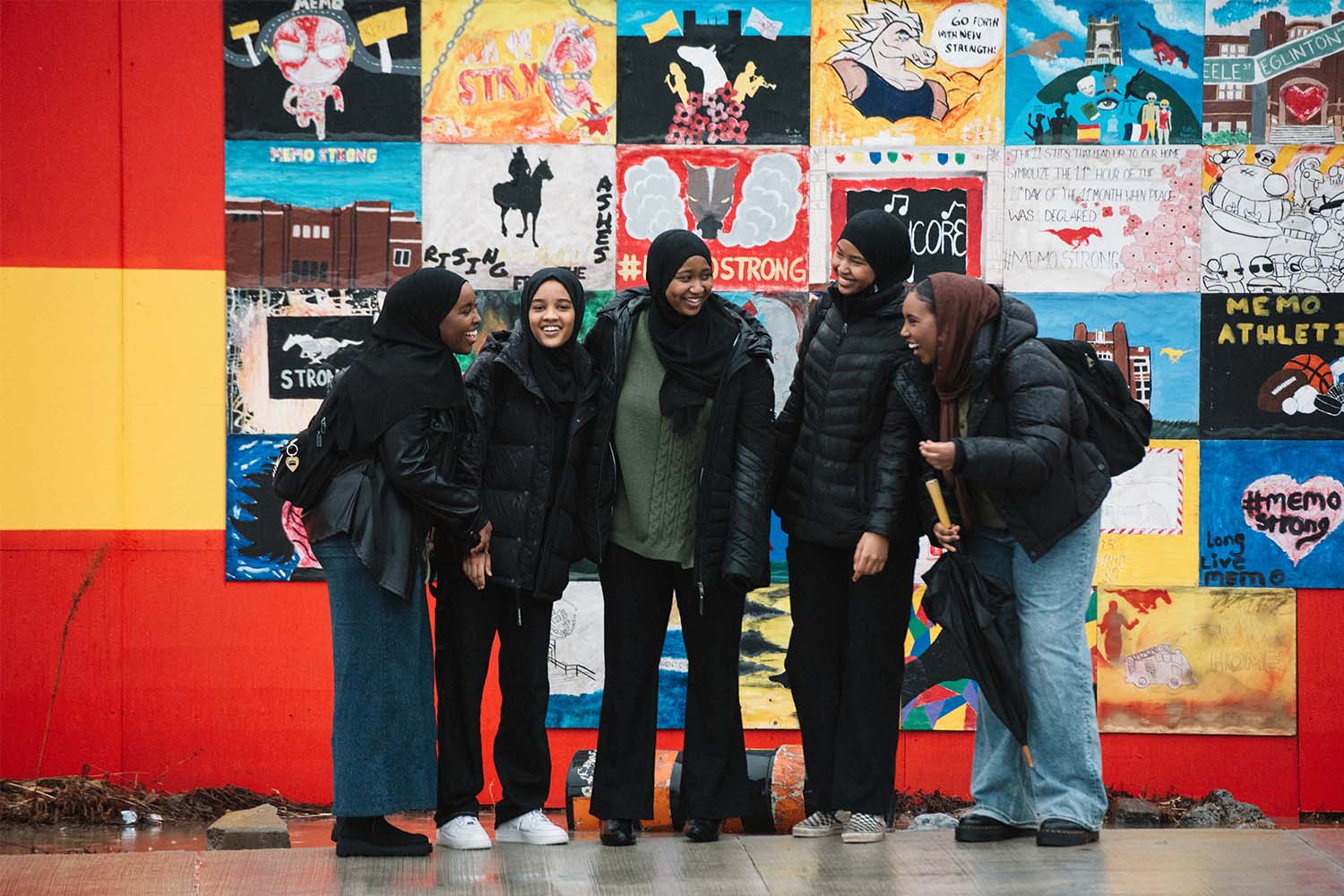
Since 2022, the Ontario Autism Coalition’s (OAC) education committee has taken on exclusions as a focus of their advocacy. The group has a Facebook page with more than 20,000 members, made up of parents, family members, and adults with autism. “We get a lot of families on there who are dealing with ongoing exclusions,” says Kate Dudley-Logue, vice-president of community outreach.
The OAC is pushing the Ministry of Education to better track and report data on exclusions—where they occur, why, and how they can be reduced. “Not only should these exclusions not be happening, but we should be studying them, because they honestly give the best marker of where the support is lacking.”
Dudley-Logue says that there are situations in which safety concerns do exist, where a child having a hard day may need to come home. But in many of the cases she sees, the issue leading to the exclusion could have been addressed with accommodations and support.
“What we’re really seeing happening is that schools are managing their staffing levels by sending children with disabilities home,” she says. “That’s clearly not right. Children with disabilities have every right to a full, meaningful school day, where they receive education that they can access.”
Jessica Cooper, president of the Peel Elementary Teachers’ Local, says that broad issues with under-funding of special education can create the conditions for a school exclusion. “You don’t hear people say, ‘We’re excluding [students] because we can’t afford it’,” she says. “But what happens is that there isn’t enough staff or supports in place in order to support the child the way that they need. And so—I wouldn’t say that it’s very common—but in rare cases, students are excluded for a period of time while services are put into place.”
Cooper highlights the PDSB’s $33-million special education funding shortfall as an exacerbating factor.
“The ratio of students requiring special education supports is actually increasing. So the need is greater than ever and we have less funds to put to everything,” she says. “We’ve been chronically underfunded for years. It’s not just the Ford government that has underfunded the education system, but certainly the Ford government has continued to underfund, and has made the funding problem even more of a crisis.”
Chandra Pasma, the Ontario NDP’s Education Critic and an Ottawa MPP, took on the issue of exclusions after the OAC brought it to her attention, pushing for better data and conducting her own research. Pasma says that for most parents, the issue goes completely unnoticed; most will never have heard of an exclusion. But “if you have a child who has disabilities or has special needs in any way, then there’s a very good chance that this has impacted you.”
In February, after receiving the dual exclusion notice, Layla and Jalal finally had enough. They felt betrayed, hearing the school talk about new supports only to have them close the door on the twins.
They sought legal representation. Once a lawyer was involved, things began to change rapidly. Layla chose to keep the children at home for the rest of the term. But with a lawyer present, the school was willing to discuss what it would take to get the students back in the classroom the following year.
The children underwent psychological evaluations that Layla hoped would assist in guaranteeing them accommodations. Their lawyer also advised the family to visit other Peel schools for the new school year. At the first new school visit, Layla walked up from the parking lot, accompanied by her older son. She hadn’t even reached the threshold when she felt her eyes well up. “I broke down into tears,” she recalls. “I know it sounds silly.” The building loomed before her. Standing in its shadow, she felt a sense of overwhelming, nauseating defeat.
“I tried so hard to advocate for my children, and at the end of the day, it’s like nothing mattered,” she said. The principal guided Layla into his office, telling her to take her time. Legs unsteady, heart racing, she inhaled and exhaled.
With the principal’s encouragement, Layla collected herself and began the tour. As they walked, she told him about the issues her children had at their old school. “Nothing that I said seemed so absurd,” she said. “He said, all these behaviors that you’re talking about are very typical of children that have experienced trauma. We never look at a child and say, this child is bad. We look at a child and say, ‘What is causing them to have this behaviour?’”
Layla knew this was where she wanted to send her twins.
This past year, Yasir was enrolled at the new school, where he thrived. Farah completed the mandatory therapeutic program required for her to be allowed back into school. Layla can see glimmers of hope. But often, she finds herself thinking about the families without resources to hire lawyers and keep their kids at home. She thinks about the kids still navigating the unyielding, labyrinthine process–the kids who are still excluded.


